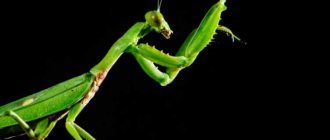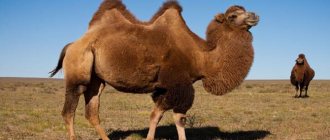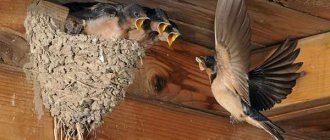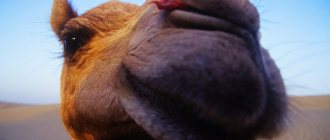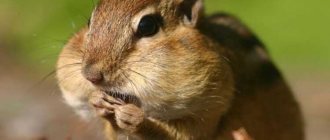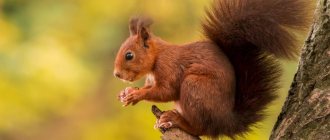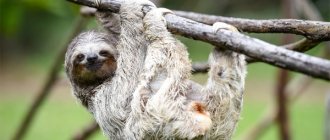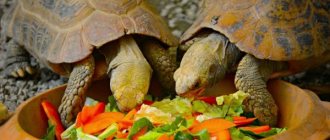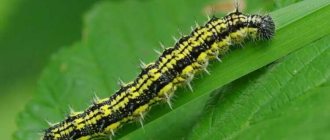Review author: “ZooVita”
In this article you will find information about gophers, why they are interesting, where gophers live, what they look like and eat, photos of gophers and much more. The gopher is a representative of the squirrel genus. These rodents communicate with each other using special sounds. Thanks to this peculiar communication, the word “gopher” appeared, from the word “susati”, which is translated from the Old Slavonic “to hiss”.
Due to the ability of this small rodent to carry dangerous diseases such as plague and damage agricultural land, it began to be pursued by varminters, rodent hunters. This sport hunting led to the extinction of some representatives of the species. They were even included in the Red Book.
Description of the animal gopher
The average size of a gopher is approximately from 15 to 27 cm, but there are also larger individuals, measuring 40 cm. The tail is short, less than half the body of the rodent. The weight of the mammal can reach about one and a half kilograms. The female is always lighter and smaller than the male.
The hind legs of the rodent are longer than the front ones. The limbs have sharp claws with which the animal can dig a hole for itself.
The gopher's head is small and elongated in shape. The ears are almost invisible, as they are covered with fluff. The eyes have many lacrimal glands, due to which the cornea is protected from dust.
Gophers have cheek pouches that are filled with food, which the animal stores in its burrow.
Wool covers the gopher's body. In summer, the fur is short and stiff, which promotes normal thermoregulation and prevents overheating. In winter, on the contrary, the fur becomes long and dense to retain heat. The color of the coat depends on the specific type of animal and the time of year.
Ways to fight
Several methods are used to combat gophers:
We invite you to familiarize yourself with the Gopher animal. Lifestyle and habitat of the gopher
- Poisoned baits. Oat or corn grains are soaked and treated with zinc phosphide. The grains are then scattered by hand, with the help of cars or aircraft near a large concentration of animal settlements. In this case, all safety rules must be strictly observed. IMPORTANT. The grain for bait must be of good quality, free from impurities and foreign odors.
- Gasation no. This method is complex and quite expensive. It should be used in places where the seed method of destruction cannot be used.
- Fishing with traps. This method is used on the outskirts of crops, near roads. Arc traps No. 0 and No. 1 are used. This method is especially effective in the spring before the young animals appear.
Attention! Gophers carry plague and other infectious diseases, and they can become infected through direct contact with the animal and through the bites of fleas that live on them.
Gopher lifestyle
In the steppe, the gopher can be seen from afar, since this animal has the ability to look into the distance, sensing danger. Burrows are dug at a depth of about three meters. In a mink the animal hides from danger and sleeps. Some subspecies make a pantry in their burrows where they store food supplies.
Basically, gophers live in a flock and it is rare to see a single individual. A flock usually consists of at least ten individuals. This does not prevent each gopher from having a separate hole with its own territory, so the gopher settlement resembles a small town.
Gophers are most active in the early morning or late evening, as they do not like the intense heat of the day. They do not stray far from their burrow in order to respond to danger in time.
Usually, when the family is feeding, several representatives of the flock form a kind of patrol around the perimeter and look around for any threat. Due to poor eyesight, animals try to climb onto any hills or hillocks.
Habitat of gophers
The gopher animal is often found in temperate latitudes. This is the forest-tundra and steppes of the North. Open landscapes attract mammals. Gophers live on the ground, and the soil of the ground determines the depth of the hole that the gopher will dig. In sand, the mammal can dig a hole 15 meters long, and in clay soil no more than seven.
Looking deep into the hole, you can see the nesting chamber covered with leaves and grass. There are usually small mounds in front of the entrance to the gopher's home.
Where do they live?
Natural habitats are mainly associated with the territory of the Euro-Asian continent. In addition, gophers are found in North America. Most often they are found in temperate latitudes, in tundra, forest-tundra, steppes, meadow-steppes, meadows, etc. Moreover, these animals can be found without problems in mountainous regions, as well as in deserts and semi-deserts. They prefer to lead a above-ground-underground lifestyle, choosing for this open areas located on hills. These animals can be found near populated areas, within railways, in abandoned areas, at abandoned national economic facilities, etc.
How a gopher hibernates
The gopher's hibernation lasts longer than that of many other animals. The length of the hibernation period depends on the climatic characteristics of the habitat.
In cold climates, even June can be the beginning of hibernation if the mammal has managed to accumulate the required amount of fat, and if there is enough of it, then hibernation continues throughout the winter. This does not apply to females who need to feed their offspring.
Most often, after hibernation during the summer, gophers wake up in September to stock up on fat for the winter. The winter months pass in a sleep again, and with the appearance of the first spring sun rays and young vegetation, the animals emerge from their burrows.
Life cycle
The steppe ground squirrel hibernates 9 months a year. In this sense, he is the record holder among all hibernating animals. This period ends at the end of February. The males wake up first, only after them the females, and only then the young individuals. Immediately after waking up, mating season begins. It lasts approximately two weeks.
Females carry their cubs for 30 days, small gophers are born in April-May. One brood can consist of from 4 to 14 cubs. The female feeds the offspring for a little more than a month, then the cubs leave the mother and begin an independent life.
Young individuals begin to dig a hole for themselves on a free mound; the soil there is much softer than on virgin soil. First, an inclined passage is dug, which is then clogged with earth from the inside. The vertical passage, which slightly does not reach the surface of the earth, is constructed by the animal closer to the onset of hibernation.
The soil that the steppe zone gopher throws from the lower layers to the surface is very important for soil formation. Many experts are confident that thanks to steppe rodents and ground squirrels, among others, the southern regions of Russia are rich in black soil, the most fertile in the world.
With the onset of heat, when the main part of the vegetation dries out, most gophers move from highlands to lowlands, since the grass cover remains fresh there longer. However, this does not happen in all regions. For example, in Central Asia, in hot weather, gophers go into summer hibernation.
The enemies of these rodents are various predators, including foxes, wolves, steppe eagles, and ferrets.
Gopher nutrition
The gopher is an omnivore, since in addition to plant food, its diet also contains animal food. But predominantly plant foods make up the main diet of the rodent.
Some species eat not only stems, leaves and fruits, but also plant roots. By doing this, they harm various grain crops. The animal stores dry grass, seeds of various grasses and trees, and seeds of cereal crops. Tundra gophers eat moss.
The animal diet of gophers consists of caterpillars, ground beetle flies, locusts, midges, grasshoppers, worms, chafer larvae, eggs and chicks of an unattended nest. Once in a person’s garden, the animal digs up vegetables and flower bulbs.
Interesting Facts:
- Large species of gophers are the object of the fur trade. Early spring skins imitate mink. The lard of the yellow gopher is edible and is also used for technical purposes.
- Gophers are used for special sport hunting - varminting (a type of high-precision shooting at long and ultra-long distances against rodents (marmots, gophers, rats and other small animals).
- Many species of gophers are pests of grain crops, melons and garden crops, as well as natural carriers of pathogens such as plague, tularemia, and brucellosis.
Mating season of gophers
Despite the emaciated appearance of the animals, their rutting period begins immediately after emerging from hibernation. There are also conflicts between males for the favor of the female.
After fertilization, a gestation period begins, lasting about a month. How many newborns there will be depends on the specific habitat and how well the female ate during gestation.
Newborns feed on mother's milk for six weeks, and after a couple of weeks they gain the ability to see. After a month they feed on their own, but live in the hole for at least twelve weeks.
The mother protects the babies from strangers; if an uninvited guest appears, she fluffs her tail to appear larger and terrify the enemy. Also, the mother digs holes for her offspring, so that after three months the young animals can move there.
Life expectancy of gophers
Gophers in the wild usually live short lives, on average two to three years. The reason may be a late spring, predators and even cannibalism, which occurs in the female due to stress, as well as lack of food and water.
Despite the fact that rodents are carriers of infectious diseases and cause damage to agricultural land, their existence is not useful. The gopher brings certain benefits to nature, namely:
- The gopher eats some insect pests, thereby reducing their population.
- Thanks to the burrows dug by mammals, the permeability of soil moisture and air increases.
- There is an increase in rare species of birds of prey that feed on rodents
Gophers are an integral element of the food chain, ensuring the existence of other living creatures. If they disappear, the number of other animal species will also decrease.
Content
It is not difficult to catch a gopher, but it is much more difficult to accustom it to life in captivity. One can hardly hope that this rodent will turn into an easy-going and responsive pet. Gophers are not accustomed to people. In addition, their lifestyle is not very suitable for keeping at home. Early in the morning they are active, and during the day they hide in a hole. In addition, it is necessary to take into account that these animals do not have a very pleasant smell.
Quite often, keeping gophers in a cage shortens the life of the animals, and sometimes leads to their death. Gophers do not reproduce in a cage. But if you really want to have this funny animal, then you should keep it in a spacious enclosure in the fresh air. The only species that may be suitable for keeping at home is the thin-toed ground squirrel. It is distinguished by its funny habits, which are very reminiscent of a squirrel.
There must be a shelter inside the enclosure so that your pet can safely hibernate. Cover the floor of the cage with hay or straw, which must be changed regularly. The gopher definitely needs a drinking bowl.
